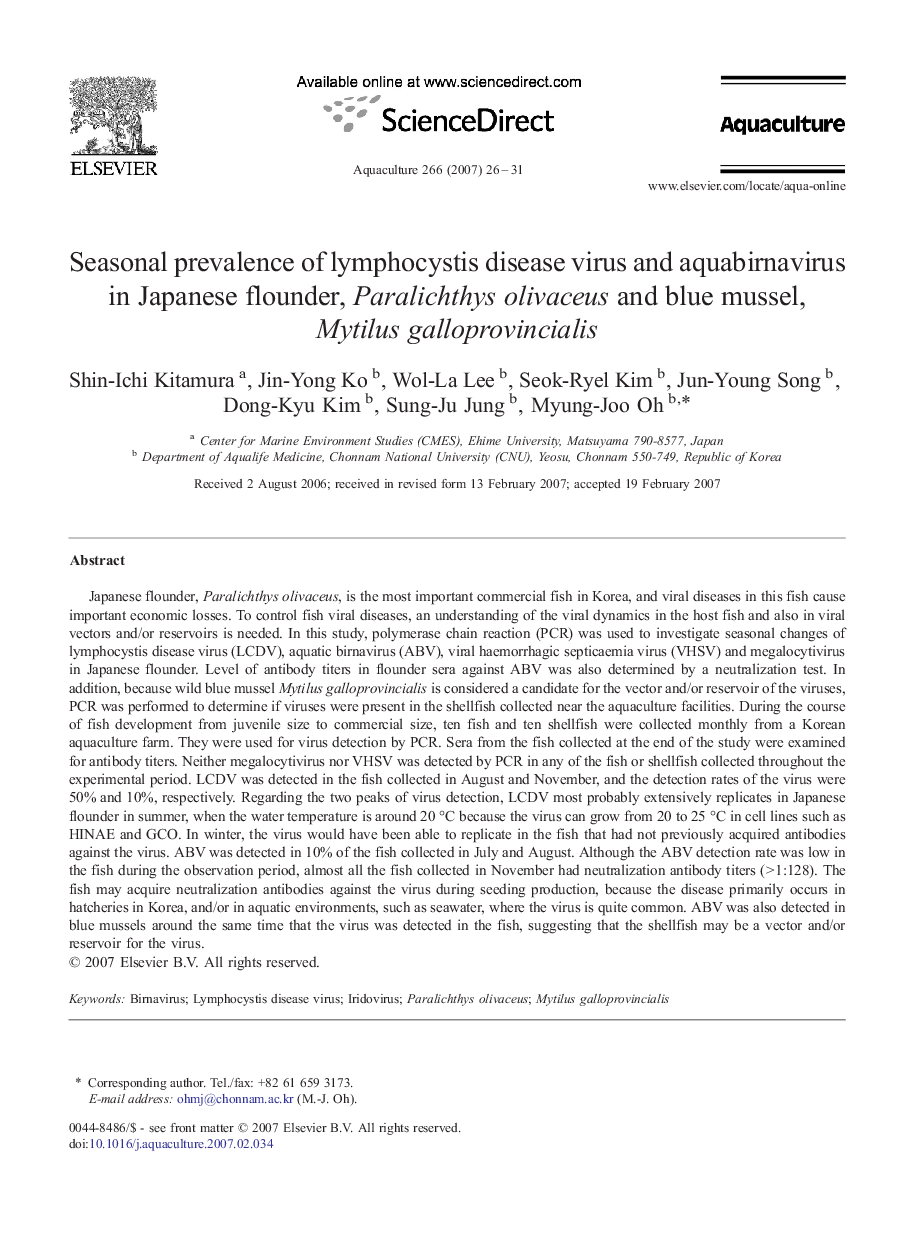| کد مقاله | کد نشریه | سال انتشار | مقاله انگلیسی | نسخه تمام متن |
|---|---|---|---|---|
| 2425188 | 1552976 | 2007 | 6 صفحه PDF | دانلود رایگان |

Japanese flounder, Paralichthys olivaceus, is the most important commercial fish in Korea, and viral diseases in this fish cause important economic losses. To control fish viral diseases, an understanding of the viral dynamics in the host fish and also in viral vectors and/or reservoirs is needed. In this study, polymerase chain reaction (PCR) was used to investigate seasonal changes of lymphocystis disease virus (LCDV), aquatic birnavirus (ABV), viral haemorrhagic septicaemia virus (VHSV) and megalocytivirus in Japanese flounder. Level of antibody titers in flounder sera against ABV was also determined by a neutralization test. In addition, because wild blue mussel Mytilus galloprovincialis is considered a candidate for the vector and/or reservoir of the viruses, PCR was performed to determine if viruses were present in the shellfish collected near the aquaculture facilities. During the course of fish development from juvenile size to commercial size, ten fish and ten shellfish were collected monthly from a Korean aquaculture farm. They were used for virus detection by PCR. Sera from the fish collected at the end of the study were examined for antibody titers. Neither megalocytivirus nor VHSV was detected by PCR in any of the fish or shellfish collected throughout the experimental period. LCDV was detected in the fish collected in August and November, and the detection rates of the virus were 50% and 10%, respectively. Regarding the two peaks of virus detection, LCDV most probably extensively replicates in Japanese flounder in summer, when the water temperature is around 20 °C because the virus can grow from 20 to 25 °C in cell lines such as HINAE and GCO. In winter, the virus would have been able to replicate in the fish that had not previously acquired antibodies against the virus. ABV was detected in 10% of the fish collected in July and August. Although the ABV detection rate was low in the fish during the observation period, almost all the fish collected in November had neutralization antibody titers (> 1:128). The fish may acquire neutralization antibodies against the virus during seeding production, because the disease primarily occurs in hatcheries in Korea, and/or in aquatic environments, such as seawater, where the virus is quite common. ABV was also detected in blue mussels around the same time that the virus was detected in the fish, suggesting that the shellfish may be a vector and/or reservoir for the virus.
Journal: Aquaculture - Volume 266, Issues 1–4, 1 June 2007, Pages 26–31